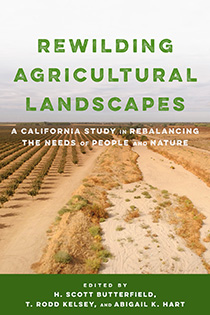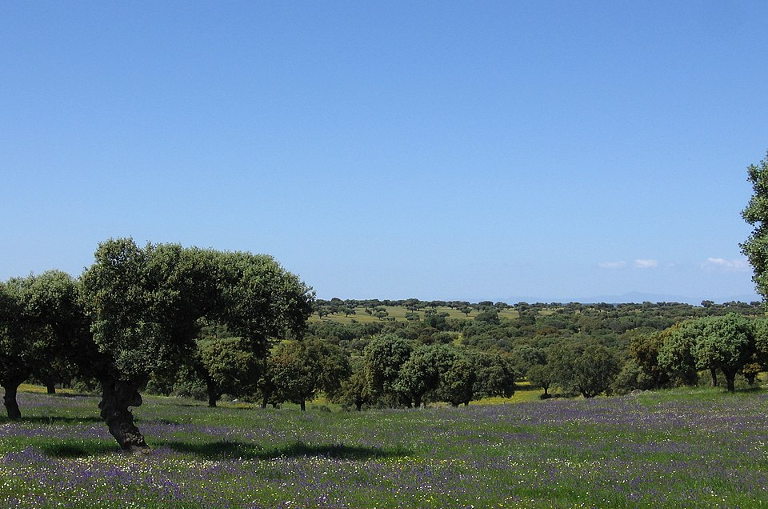 Rewilding Agricultural Landscapes
Rewilding Agricultural Landscapes
Edited by H. Scott Butterfield, T. Rodd Kelsey, and Abigail K. Hart
Published by Island Press
From Rewilding Agricultural Landscapes edited by H. Scott Butterfield, T. Rodd Kelsey, and Abigail K. Hart. Copyright © 2021 The Nature Conservancy. Reproduced by permission of Island Press, Washington, D.C.
Chapter 1. Opportunity Knocks (pages 4-5)
Rewilding is a hot topic these days, getting a lot of attention in both the popular press (Monbiot 2014) and scientific community (Fernández et al. 2017). There has even been debate about whether the idea is a good one, ecologically and financially speaking (Rubenstein and Rubenstein 2016). It can mean different things to different people. The term rewilding was originally coined by Soulé and Noss in the 1990s to raise awareness of the value in restoring large areas of wilderness and reintroducing top predators as critical regulators of whole ecosystems (Soulé and Noss 1998). More recently, it has been expanded to include such ideas as introducing nonnative top predators and large herbivores (megafauna) based on their potential to act as top-down engineers of whole ecosystems where the native megafauna are long gone (Cromsigt et al. 2018). There is certainly evidence that “ecosystem engineers” can play an important role in creating and maintaining diversity and ecosystem function, a topic we examine more closely for the San Joaquin Valley in chapter 4.
For example, wolves are credited with a significant transformation of the Yellowstone ecosystem by moderating the population size and behavior of elk, which trickled down to affect riverine forests and the species within. Beavers serve a similar engineering role by holding back and slowing down water, thus maintaining stream flows and groundwater, purifying water by filtering out sediment and pollutants, supporting large wetland complexes, and shaping the habitat for countless plant and animal species that depend on these wetland systems.
The term rewilding is being used more broadly these days to refer to restoring diversity, variability, and function so that ecosystems can once again support the full diversity of species and become self-regulating and resilient to climate change (Perino et al. 2019). Aside from the more dramatic and controversial proposals for rewilding based on reintroducing top predators, we can take advantage of obvious and less controversial opportunities for simply restoring native systems to places where they have been lost (see chapter 3). The idea of restoring intensively farmed landscapes back into natural habitat and wild communities is gaining traction because of ongoing or imminent shifts in land use and water availability (see chapter 11).
This is an important opportunity to rewild these highly altered landscapes and, by doing so, to increase their sustainability and improve human well-being of the communities in and around these areas (see chapters 12–14). Already our most picturesque and vibrant agricultural regions are those where there is abundant diversity. Imagine the most attractive agricultural regions of Mediterranean Europe that have been cultivated for thousands of years but still retain native forest along the rivers, wild farm edges, and a diversity of crops, an idea we examine in greater detail for the San Joaquin Valley in chapter 10. Some of these more diverse agricultural systems are the result of deliberate use of traditional agricultural management systems that provide habitat for endangered species, such as the dehesa agroforestry system, which supports the Iberian lynx in Spain (Halada et al. 2011). By rewilding intensively farmed landscapes in small and large ways we have the opportunity not only to restore wild species that have been pushed to the brink but also to increase the sustainability of agriculture and create tangible benefits for human well-being.
Teaser photo credit: Dehesa in Extremadura, Spain. By No machine-readable author provided. Ardo Beltz assumed (based on copyright claims). – No machine-readable source provided. Own work assumed (based on copyright claims)., CC BY-SA 3.0, https://commons.wikimedia.org/w/index.php?curid=749372





